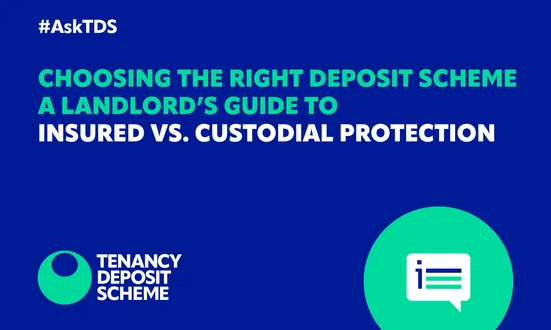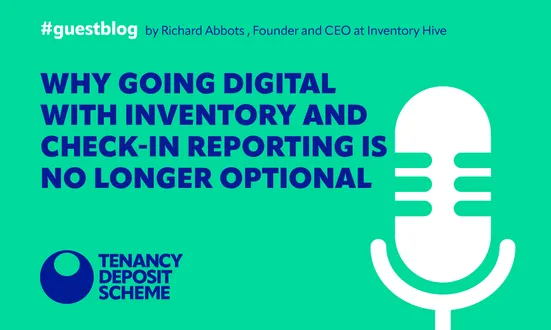Tags: deposit protection, tenancy deposits, tenancy deposit scheme, contact information, tenant contact details
The average length of the average tenancy period in the private rented sector is getting longer as the market expands. Lengthier tenancies can benefit both landlords and tenants alike, offering a stable home to the tenant and a secure income for the landlord.
It’s more important than ever to ensure that landlords and their letting agents have a process in place to regularly update their tenants’ contact information, the longer the term of the tenancy, the more chance there is of tenants changing their phone numbers and email addresses.
At TDS, we see first-hand the struggles faced by the parties when a tenancy reaches its end date and there is difficulty contacting tenants.
TDS currently does not hold the contact details for around 3% of the tenants associated with tenancy deposit registrations under our Custodial tenancy deposit protection scheme and 6% of the tenants in our Insured scheme.
Communicating with the tenants at the end of the tenancy is vital so that the tenancy deposit stakeholder can discuss how to distribute the deposit and discuss any proposed deductions.
Introduce your tenants to tlyfe, our exclusive free lifestyle app for tenants
TDS and OpenBrix have collaborated to launch tlyfe, an app that makes the renting experience easier for tenants, landlords and agents. The app includes features such as digital ID verification, right-to-rent checks, an interactive move-in process, auto document storage, and the ability to help tenants build their credit rating. These features are all integrated with other industry products to provide a comprehensive range of benefits. Read more here.
Top tips to keep up communications
Here, we want to give you some top tips to find opportunities, at various stages of the tenancy, to gather and update tenant information where it may change.
- Be Prepared
You can take active steps to avoid being left without means of contacting the tenant by being fully prepared at the beginning of a tenancy.
Firstly, ensure you have the correct contact information for all tenants, not just one or the lead tenant. Take a valid email address and stress to your tenants the importance of them keeping you up to date if the email address changes. By reinforcing the fact that this email address will be the contact method used to discuss the return of the deposit at the end of the tenancy, it will increase the tenants’ understanding of the importance of this information.
You can also take mobile details as well as any alternative contact numbers; it is better to have too much than too little in this situation. The more ways you have to make contact, the higher the possibility of getting in touch and resolving any issues with the tenant. Completing the long list of details required under the Prescribed Information requirement with alternative contact address details address for contact after the tenancy ends to remove much of the risk of a situation when the tenant absconds.
TDS can only authorise the release of tenancy deposit funds if both parties agree to the allocations of the deposit. If the parties to the tenancy are unable to agree to deductions TDS can adjudicate on how the deposit should be released but this will only be based on the evidence supplied and if TDS are also able to contact the tenants. In our experience, where contact details are current and up to date the end of tenancy process can be more seamless as the parties are able to engage with each other and TDS where necessary.
- Don’t miss an opportunity
As we’ve already touched upon, the start of the tenancy is the best time to collect contact information for your tenant and to communicate the importance of keeping this information up-to-date. What proactive steps can landlords and agents take during the term of the tenancy to ensure the information held is current?
There are various occasions during a tenancy that landlords and agents can utilise to gather up-to-date contact information such as when arranging periodic property inspections, coordinating for contractors to attend to maintenance repairs or during any tenancy correspondence with your tenant. A small addition to your emails/letters reminding your tenant to update you with any changes to their contact information will help to keep the contact data held on file accurate. Remember, the email address is the key contact information that is needed and should therefore be prioritised in your correspondence.
- The final countdown
When you know a tenancy is coming to an end, this is another opportunity for landlords and agents to check that the e-mail address they hold for their tenant (and additional contact information) is up to date. Use the end of tenancy documentation to reiterate the importance of these contact details being valid. Remind your tenant that if you are unable to contact them when they move out, this may result in delays or difficulties in arranging for deposit funds to be released or discussed with them.
It is always advised to carry out an end of tenancy inspection and allow your tenants an opportunity to attend. At this inspection, you can check with your tenant that the email address you hold for them is the best and most relevant email address to use. It is important to remember that this is a benefit for both parties to avoid any delays in the return of the deposit.
Key Points
- First and foremost – get email addresses from all your tenants
- Having an address for contact after tenancy ends will help your end of tenancy discussions
- Use pre-tenancy, during tenancy and end of tenancy as opportunities to ensure these details are up-to-date
About the author:
Debbie joined TDS in July 2017 and is now Head of Sales and Client Success with an extensive background in the property industry with over 18 years’ experience in residential lettings, she is ideally placed to guide customers about the services of the Tenancy Deposit Scheme.
About TDS
Tenancy Deposit Scheme (TDS) is a Government-approved scheme for the protection of tenancy deposits; TDS offers both Insured and Custodial protection and also provides fair adjudication for disputes that arise over the tenancy deposits that we protect.
We provide invaluable training in tenancy deposit protection and disputes for agents and landlords through the TDS Academy as well as joining with MOL to provide the Technical Award in Residential Tenancy Deposits.
TDS Insured Scheme: where a TDS member can hold the tenancy deposits as stakeholder during the term of the tenancy.
TDS Custodial Scheme: where TDS hold the deposit for the duration of the tenancy.
TDS Academy: TDS provides property professionals with invaluable training in tenancy deposit protection and tenancy deposit disputes.
TDS Northern Ireland: TDS is Northern Ireland’s leading and only not for profit tenancy deposit protection scheme.
TDS can only comment on the process for our scheme, other deposit protection schemes may have a different process/require different steps. Content is correct at the time of writing.
These views are those of the author alone and do not necessarily reflect the view of TDS, its officers and employees.
Other news stories


